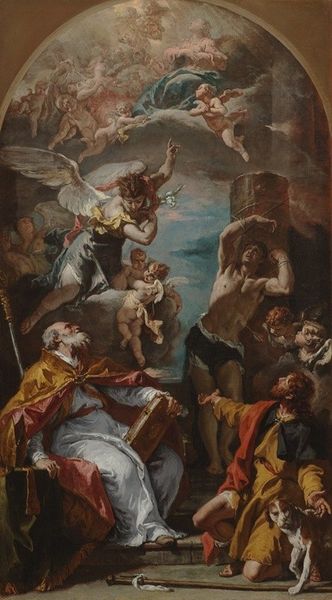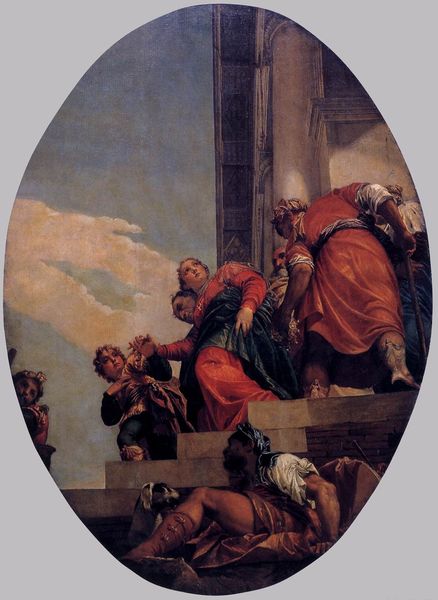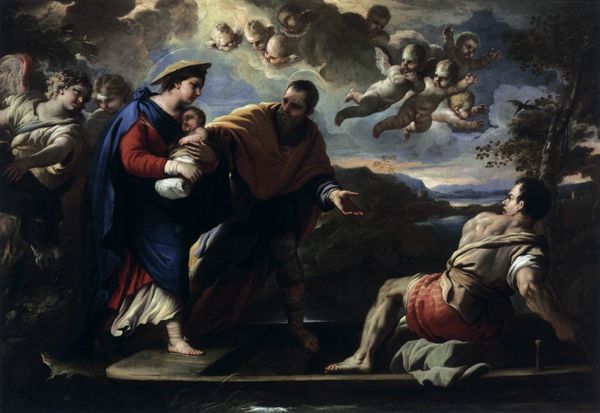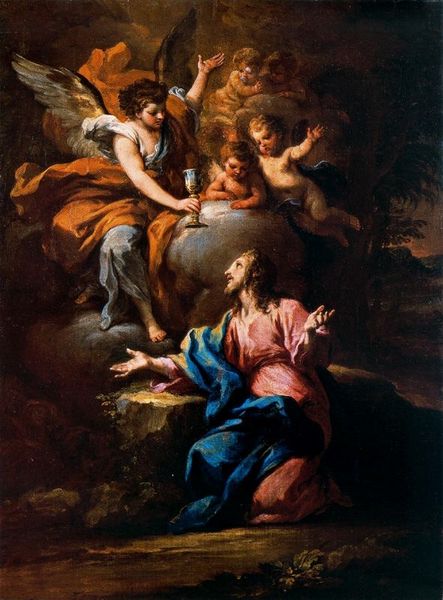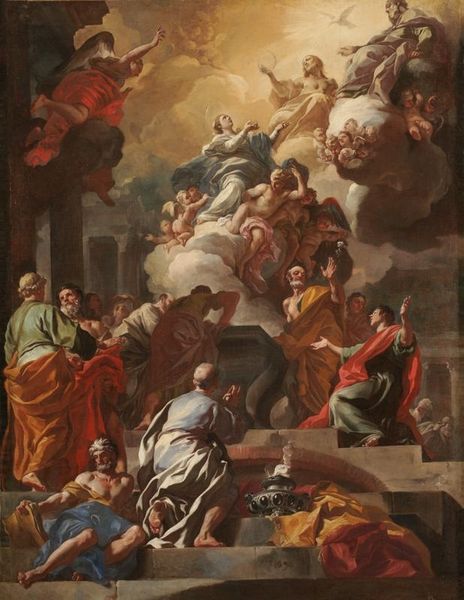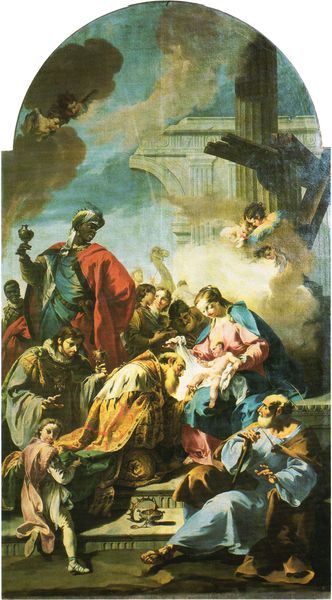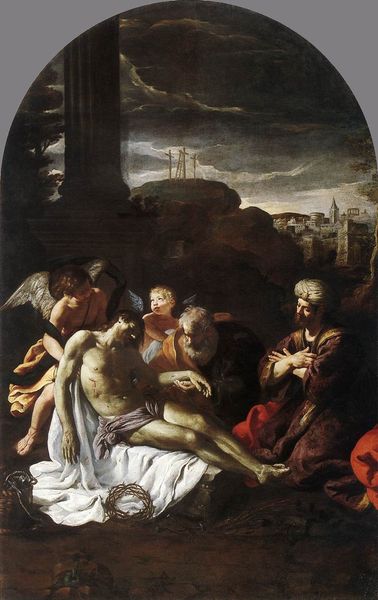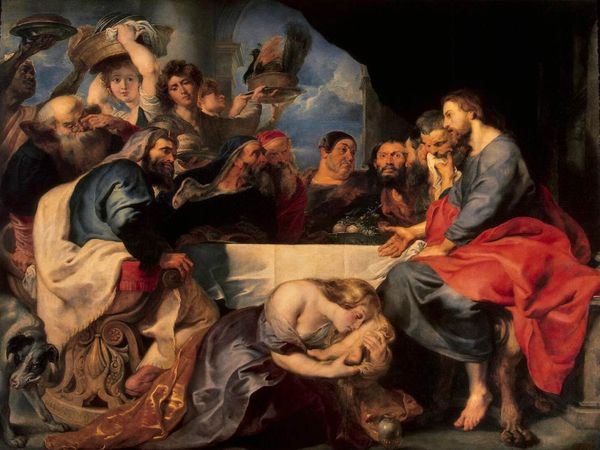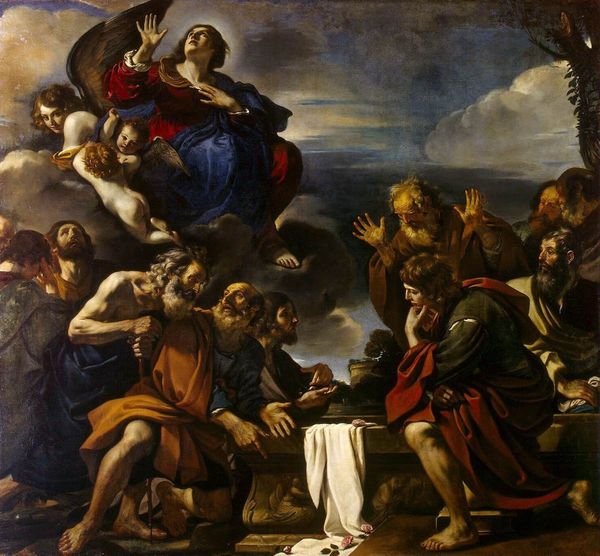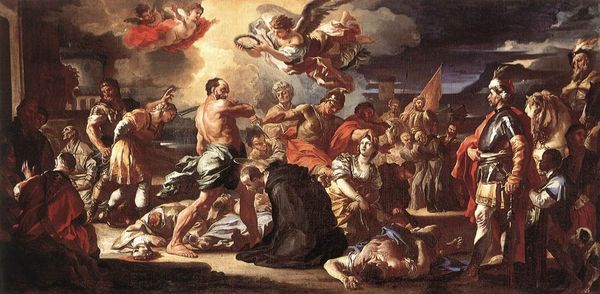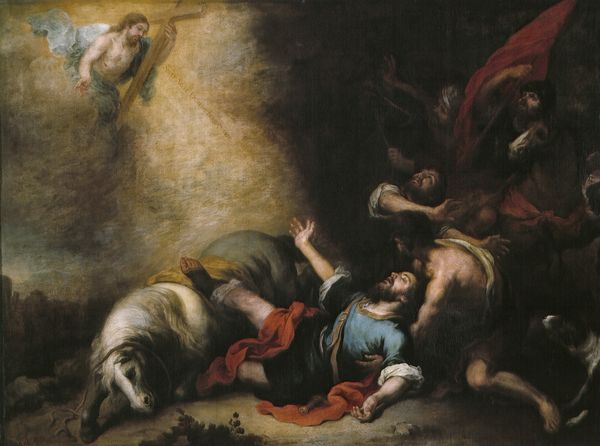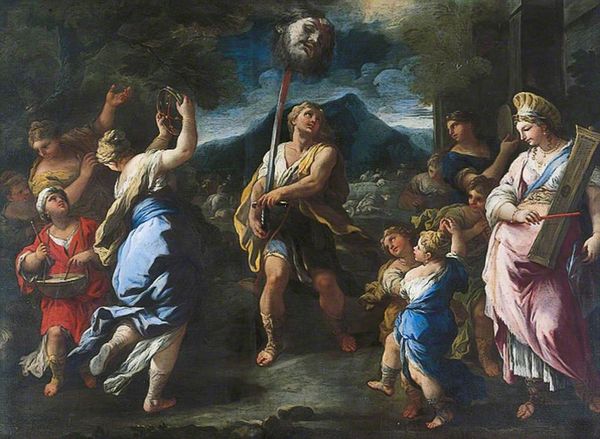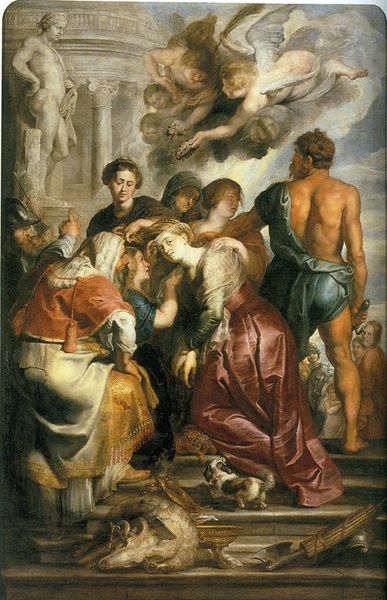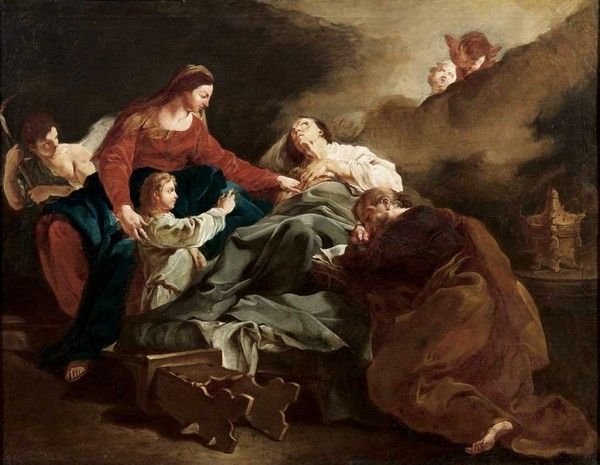
Dimensions: 301 x 242 cm
Copyright: Public domain
Curator: Looking at this canvas, one is immediately struck by the theatrical dynamism, isn’t one? The emotional tenor feels carefully orchestrated, as if poised for performance. Editor: It absolutely does. We're observing Nicolas Poussin’s "The Apparition of the Virgin to Saint James the Great," crafted in 1629. Notice the robust figures, rendered with such visceral realism. The Baroque period favored grand gestures, indeed! Curator: Poussin’s rendering of the fabric – the way he builds up those forms. It’s almost as if he’s sculpting with pigment, and I wonder if we're truly appreciating the social dimensions of Poussin's workshop at the time and their labour behind such a stunning achievement. What were their class positions, what skills did they bring from their particular communities? Editor: Yes, and his process clearly shows an artist deeply engaged in the complex historical and theological narratives of his time. I want to center that narrative, but also ask: why *this* miracle? James the Greater, martyred, yes, but what function did painting this miraculous encounter serve within the Counter-Reformation, vis-a-vis ideas of obedience and divinely sanctioned power? Curator: Absolutely. I love that it foregrounds the artistic means by which it has been conceived, particularly considering that the raw materials, such as pigments and oils, often dictated the costs involved, directly influencing the artist’s ability to operate on certain projects, at particular scales, with specific types of paints. Editor: It also speaks volumes, though, about power, patriarchy, and even the colonial projects that funded such artistic materials. These lavish devotional images worked to reassure, inspire loyalty, and solidify political alliances when those materials had so much more blood and global implications associated to them. Curator: Perhaps in this image, the sheer physicality is meant to overwhelm, and also perhaps Poussin’s labouring engagement in all these steps, the making of this painting, becomes its own message? Editor: And if this divine moment solidifies faith, we need also be mindful of whom that faith serves in Poussin’s own historical moment. An image is never only itself, but the culmination of ideology made visible. Curator: Indeed, and the ability of artists like Poussin to mobilize his resources reflects on how artistry, even divinity, becomes a product shaped through socio-economic circumstance. Editor: Thanks for these observations that shed so much light to what is going on, behind the scenes and even on this artwork.
Comments
No comments
Be the first to comment and join the conversation on the ultimate creative platform.
